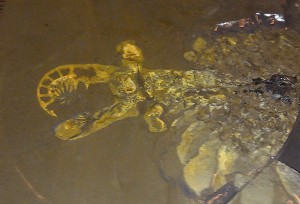Tomorrow, at 8 AM Eastern Time (5 AM Pacific) CERN (European Organization for Nuclear Research) will hold a seminar updating all and sundry on the latest data from two major experiments that have been going on for some time: the CMS (Compact Muon Solenoid) experiment and ATLAS (A Toroidal LHC Apparatus). The latter involves over 3000 physicists from around the world, including a good many Canadians. Both are looking for evidence of the Higgs boson, the so-called “God particle” that, if it exists, explains why certain particles in the Standard Model have the property we refer to as mass.
Over the last few weeks, there’s been a veritable deluge of virtual ink spilled on this matter (I personally like this article, and also this one) despite the fact that the press office has clearly stated:
These results will be based on the analysis of considerably more data than those presented at the summer conferences, sufficient to make significant progress in the search for the Higgs boson, but not enough to make any conclusive statement on the existence or non-existence of the Higgs.
So what’s everyone so excited about? Well, the fact is that even if the data is not strong enough to support a conclusive statement (the statistical term is five-sigma) it’s still the first glimpse the general public will get at the data that, given enough time and replication, will eventually allow a yes-or-no statement to be made. As Churchill is supposed to have said “It’s not the end, it’s not even the beginning of the end. But it is the end of the beginning.”
Given that so much has been written about the Higgs boson already, as well as the fact that high-energy physics isn’t really my bailiwick, I’m not going to try and tackle the subject in any great depth here. Instead, I’d like to point you to a few places where you can get real physicists to explain things to you, in person or virtually.
Waterloo’s Perimeter Institute for Theoretical Physics will be running a live webcast with the brilliant title of “What the Higgs is going on?” at 12:30 Eastern Time. It’s being pitched at the high-school level, so it should be pretty accessible and informative.
Torontoians can trundle on down to the McLennan Physical Laboratories on the U of T campus (60 St. George Street) at 12 PM to hear a presentation from physicists involved in the ATLAS project on the significance of the mornings findings. That will also be webcast here.
And finally, if you’re in Vancouver, noted nuclear physics facility TRIUMF will be hosting a public seminar in their main auditorium (4004 Wesbrook Mall) at 2:30 PM PT.
Have fun!
